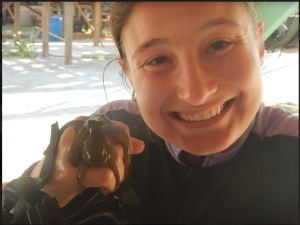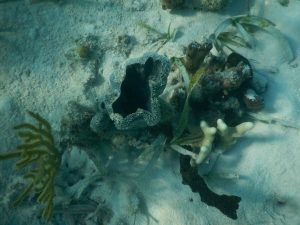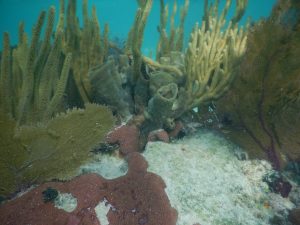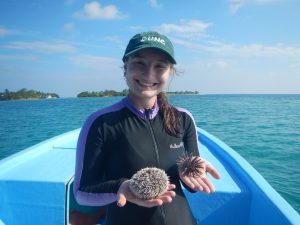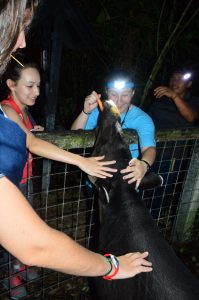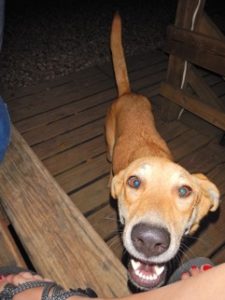Blog Post #14
Day 14: There’s So Much to Do (Make Way!)
Written at 5:37 am on May 29th
Yesterday (May 28th) was our last full day in Belize, so we had to celebrate and soak it all in.
We started by dissecting then eating the lionfish we’d caught over the course of the week. The monstrous lionfish ended up being over 0.5 kg!! He (determined by looking at the gonads) had a swim bladder that took up most of the body cavity. I was particularly fascinated with the gill structure as well as the mouth parts used to capture prey.

Scott then made his famous lionfish ceviche which I had never tried before. (Both the lionfish and a ceviche.) It tasted very fishy and chewy—not my favorite, but not bad either.
In the afternoon, we had some free time, so of course, I went snorkeling. Veronica, Sam, Chloe, and Elena came as well. I saw lots of sponges, particularly the tube and rope sponges. I also saw my first Touch-me-not sponge, a stinging, painful one when rubbed the wrong way. We also saw a brain coral that was three times my arm span in diameter, which is so impressive and wonderful. There were lots of lobster out of all shapes and sizes too.

When we returned, we did our special TFB tradition. There will be future TFBs reading this blog, so I won’t say it here because I don’t want to spoil it for them! If you’re curious though, ask me—it’s pretty fun. 🙂
In the evening, we did group meditation on the dock, looked for tarpon in the water, and just enjoyed our last night in Belize.
I now sit here watching the sunrise over the horizon, the last one we’ll see here. I am so grateful for this planet, this trip, and everything in between. There is still so much to do and see, I’m not ready to leave yet!!





